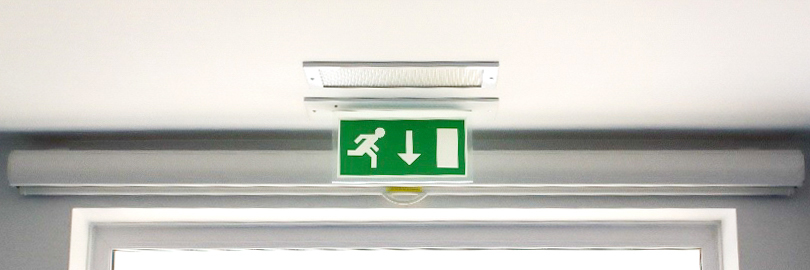Friday 17th October 2014
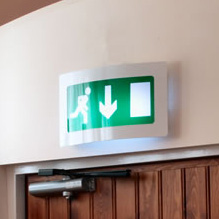 Safelincs operates a fire safety forum where people’s fire safety questions are answered by professionals. One of the frequently raised topics has been Emergency Lighting. To give you a broader understanding of emergency lighting, this blog compiles the typical queries and answers raised
Safelincs operates a fire safety forum where people’s fire safety questions are answered by professionals. One of the frequently raised topics has been Emergency Lighting. To give you a broader understanding of emergency lighting, this blog compiles the typical queries and answers raised
What is emergency lighting?
Emergency lighting is lighting that comes on when there is a mains power failure. Emergency lights are powered by rechargeable backup batteries which are either located inside the emergency light or in a central battery location
What is emergency ESCAPE lighting?
Emergency escape lighting comes on automatically when the mains power fails and gives off sufficient illumination to enable occupants and visitors to evacuate the premises safely.
Emergency escape lighting itself is sub-divided again into
- open area lighting (bulkheads and other emergency lights)
- escape route lighting (typically illuminated fire exit signs with a running white man on a green background)
- high risk task area lighting (to allow the shut down of dangerous processes)
Publicly accessible buildings as well as most businesses are required by law to provide emergency escape lighting.
What key types of emergency lights are there?
There are two key types of emergency lighting: maintained and non-maintained.
Maintained emergency lights stay on constantly at all times and stay lit for the minimum emergency duration (usually 3 hours) after a mains failure. Maintained emergency escape lights are used in places of assembly like theatres, cinemas, entertainment halls but also shopping centres and
A non-maintained emergency light will only light up in the event of a mains power failure and will also stay lit for the minimum emergency duration required. Non-maintained emergency lights are likely to be found in offices, shops and factories.
Does all escape route lighting have to be illuminated?
If sufficient open area emergency lighting is in the vicinity of a fire exit, non-illuminated fire exit signs can be sufficient in locations of minor importance. Photo-luminescent fire exit signs would be preferable in this case, although it has to be ensured that sufficient light is reaching the photo-luminescent sign to ensure it is ‘charged’ at all times.
Considerations
British Standard BS 5266-1: 2011 provides clear guidelines about the design and installation of emergency lighting. It should be remembered that the British Standards specify the best practice for standard situations, however, a higher standard may be required for a particular installation.
The actual degree of illumination should be closely related to the nature of both the premises and its occupants.
Special consideration should be given to homes for the elderly, hospitals, crowded areas such as pubs, discos and supermarkets and to whether or not the premises are residential.
Borrowed lighting may be suitable in small premises (eg small shops) where there is light coming into the building from a dependable outside source, e.g. street lamps and will adequately illuminate escape routes. Alternatively, single ‘stand-alone’ escape lighting units may be sufficient in small premises and these can sometimes be combined with exit or directional signs.
An emergency lighting system should be installed by an electrician who specialises in emergency lighting.
They would need to be conversant with BS 5266-1- 2011 Emergency lighting-Part 1: Code of practice for emergency lighting of premises.
The question of the requirement for emergency lights in schools is a bit of an anomaly.
As a school is only occupied during the hours of daylight, emergency lighting is not therefore required. However, should the school be used out of hours, in the hall for example, then emergency lighting should be installed in the hall and the exit routes from it. The ‘responsible person’ should have the final say on this and might want to consult the local fire officer.
Toilet facilities for use by disabled people and/or any multiple closet facilities without borrowed light should have emergency escape illumination from at least one luminaire. Organisations may have to provide emergency escape lighting in each cubicle if there is no borrowed light.
What are the rules for rented properties?
For residential properties landlords are deemed to be the ‘responsible person’ for all fire safety and emergency lighting.
Single occupancy houses and houses of multiple occupancy up to two storeys high only need conventional lighting, whereas three and four storeys may require emergency escape lighting if the escape route is complex and there is no effective borrowed light.
Bedsit houses of multiple occupation of one to four storeys (with individual cooking facilities within bedsits) require conventional lighting and emergency escape lighting if risk requires such or there is no effective borrowed light. Bedsit houses of multiple occupation of five or six storeys with individual cooking facilities within bedsits require conventional lighting and emergency escape lighting
Two, three or four storey houses converted to self-contained flats require conventional lighting and emergency escape lighting if the fire risk assessment requires it.
Five or six storey house converted to self-contained flats require conventional lighting and emergency escape lighting. Importantly, common escape routes should be well lit.
There are guidelines to help understand the provision required and landlords need to be aware of their responsibilities to carry out a fire risk assessment, and make sure their property has adequate and appropriate fire safety measures in place.
How do you maintain emergency lighting?
Emergency lights have to be tested regularly unless they are self-testing emergency lights.
Emergency lights with internal backup batteries display a small green LED that indicates that the internal battery is being charged. Older models may have a red light. However, you still have to check the function of the emergency light regularly, as the LED only confirms that the unit charges rather than that the battery will last the full period required or that the bulb is in working order.
All emergency lighting systems must be tested monthly. The test is a short functional test in accordance with BS EN 50172:2004 / BS 5266-8:2004.
The period of simulated failure should be sufficient for the purpose of this test while minimising damage to the system components, e.g. lamps. During this period, all luminaires and signs shall be checked to ensure that they are present, clean and functioning correctly. Emergency lighting key switches are available and allow for the interruption of the power to the emergency lights without affecting the power supply to the normal lighting circuits.
A test for the full duration (usually three hours) of the emergency lights must be carried out once a year. The emergency lights must still be working at the end of this test. The result must be recorded and, if failures are detected, these must be remedied as soon as possible.
Any batteries that do not last three hours should be changed immediately.
Life expectancy will vary depending on the make of the battery – with some makes it is four years, some five years. When the life expectancy date expires the batteries should be changed. It is a good idea that when a battery is changed the date of installation is written on the battery for future reference. Safelincs supply spare batteries.
If the fitting has a fluorescent tube the life will depend on whether the unit is maintained or non-maintained. Safelincs recommends that lamps in maintained bulkheads are changed every six months. If a fluorescent lamp has blackened ends / starting to turn black the tube needs replacing.
The occupier/owner of the premises should appoint a competent person to supervise the testing of the system. This person shall be given sufficient authority to ensure the carrying out of any work necessary to maintain the system in correct operation. Competent can be defined as someone who has sufficient training and experience or knowledge and other qualities that allow them to maintain the system properly. The level of competence required will depend on the complexity of the situation and the particular help that is required.
From a practical point of view, a normal caretaker would be able to use a test key to remove power from emergency lights and ensure that the emergency lights stay on the required period. When it comes to repair of failing emergency lights it would most likely that an electrician would be needed unless the caretaker has sufficient qualifications to replace batteries and lamps.
It is important, though, that all tests are recorded in the fire safety log book.
The longevity of emergency lights is better if lamps are changed before they are fully failing. However, this recommendation probably only applies if an organisation has a contractor for the maintenance of emergency lighting and the costs of a call-out were to be substantial. In such a case pre-emptive maintenance (changing while the light is still working) makes sense.
In the long run LED light are more economical than fluorescent tubes as they save electricity not only when the light is on but even during the trickle charging of the batteries. However, the real saving from LED emergency lights comes from not having to replace the tubes on a half yearly or yearly basis. The LEDs will last a lot longer, hence saving costs for maintenance call-outs and replacement tubes.
Many systems will have fish tail key switches in the power supply leading to suitable groups of emergency lights so that you don’t have to switch off the power at fuse level when you want to check them. If you have a system that can only be tested by switching the lighting power supply off altogether you would only be able to do your tests when the building is empty and if you have suitable portable light or suitable daylight in all locations you are checking. If you have dangerous processes in your company lighting might have to be on all the time, so that a central switch-off would be inappropriate.

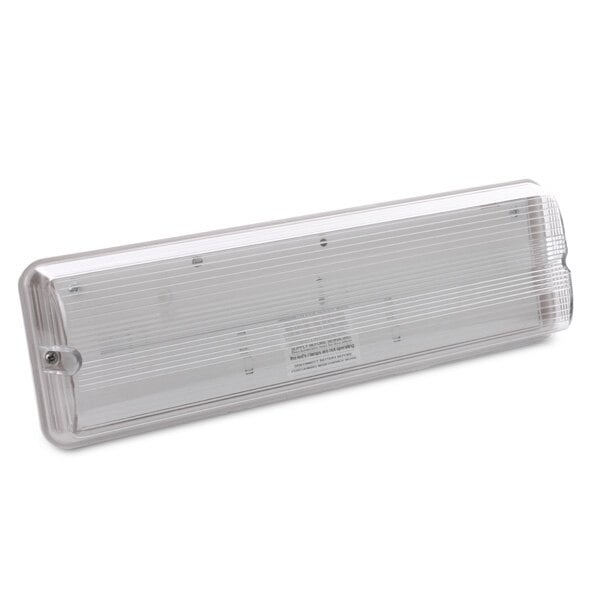
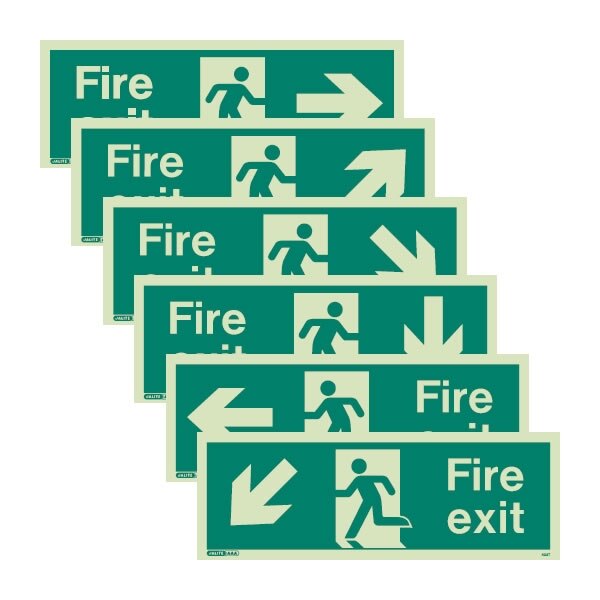
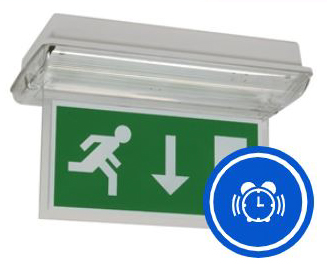
 Safelincs operates a fire safety forum where people’s fire safety questions are answered by professionals. One of the frequently raised topics has been
Safelincs operates a fire safety forum where people’s fire safety questions are answered by professionals. One of the frequently raised topics has been 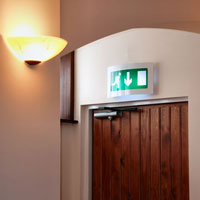 Emergency lighting is essential in most businesses, providing an immediate secondary source of light in the event of a power failure. When selecting emergency lighting you will, however, come across confusing terms such as maintained, non-maintained and switchable emergency lights. Our short
Emergency lighting is essential in most businesses, providing an immediate secondary source of light in the event of a power failure. When selecting emergency lighting you will, however, come across confusing terms such as maintained, non-maintained and switchable emergency lights. Our short 